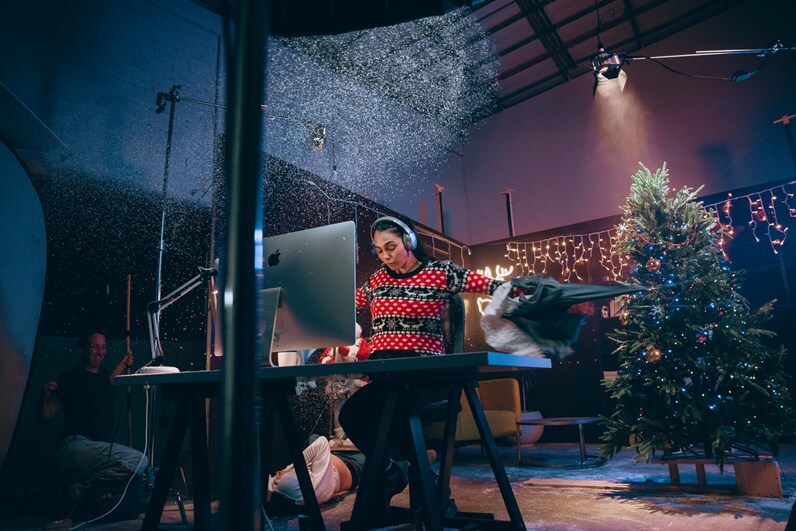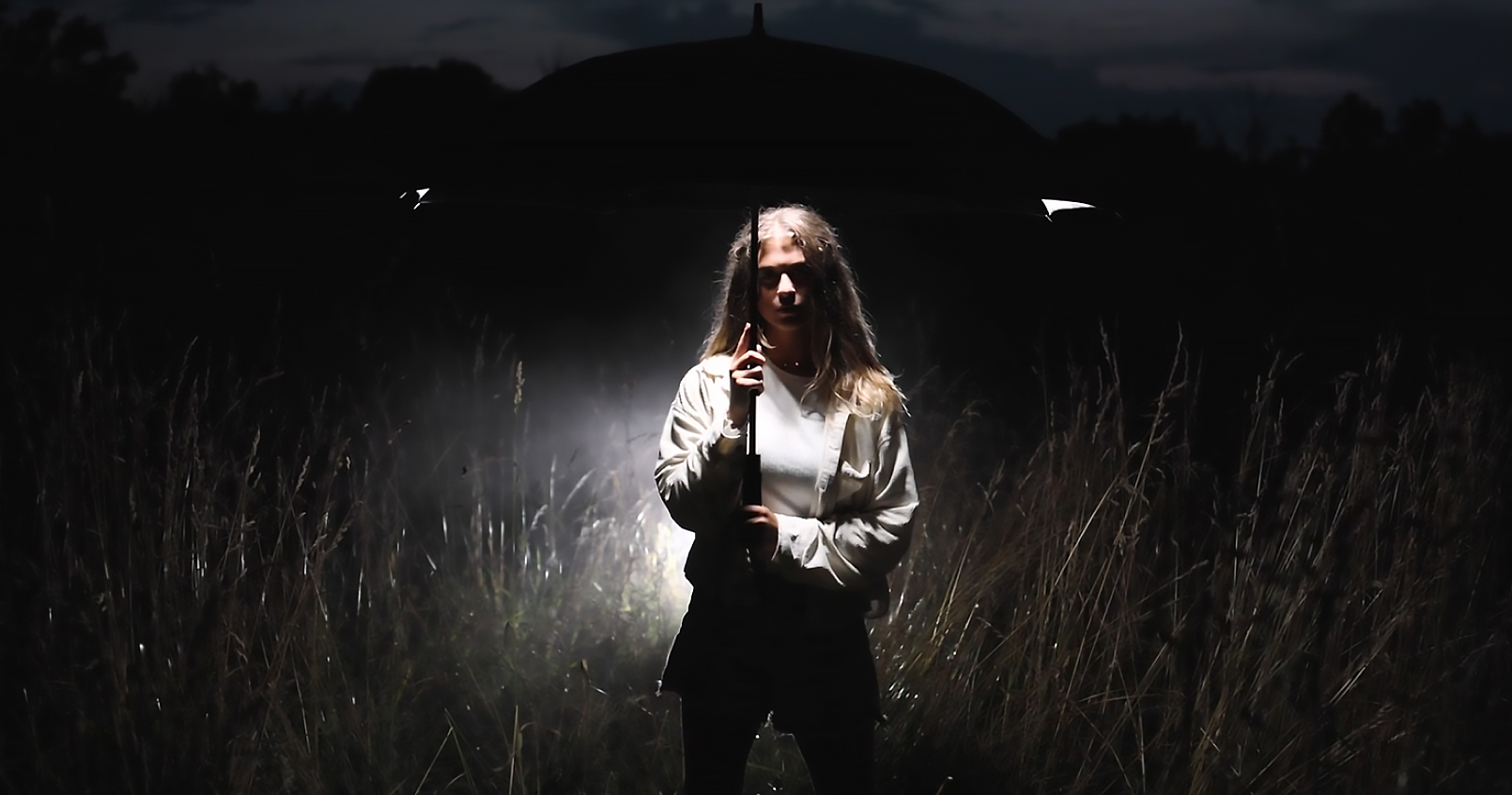Highlights
Table of Contents
Explore article topics
Quiz question for you: What do lighthouses, theaters and film sets have in common? Got it yet? It’s the Fresnel light – sometimes known as the Fresnel lantern or Fresnel lamp. Although it was initially developed in the 1820s by French engineer Augustin Jean Fresnel to improve lighthouses, the Fresnel light has become a staple of the film and theater industries. It produces a highly versatile light that you can use as a spot or a flood, as part of a 3-point lighting setup and high- and low-key lighting.
A quick pronunciation guide: Fresnel still carries the French pronunciation of its inventor. That means it’s “frey-NEL” with the emphasis on the second syllable, rather than “frezz-nul.”
What is a Fresnel light?
A Fresnel light consists of a lamp positioned between a Fresnel lens and a reflector, housed in a box. The light from the lamp is sent toward the lens by the reflector, forming a controllable beam.

A Fresnel lens comprises layers of concentric rings, each smaller than the previous one, rather than a regular spherical lens. Each ring bends the light a little more than the one beneath it, steadily converging the light into a beam. These concentric rings are what Fresnel worked on in order to improve lighthouse lanterns. The size of a regular lens would have been impractical for producing a beam of the required width and intensity to be effective in a lighthouse. Still, the bending properties of the concentric rings changed that.
The lamp, which can vary in wattage, and the reflector sit on a track and can be moved nearer to or farther from the Fresnel lens to widen or narrow the light beam. In addition, you can attach light modifiers to the front of the box – for example, barn doors – to help control the beam.
How do you use a Fresnel light?
Fresnel lights are very simple to use, making them an excellent choice for any set, as well as for lighting for YouTube videos.
If you move the lamp closer to the Fresnel lens, you get a wider fall of light that can flood a scene. Shift the lamp and reflector farther away from the lens, and the light beam becomes narrower, giving you a spotlight. This is what makes a Fresnel light so convenient: you can alter the beam angle from a Fresnel light without having to move the light itself.
It’s easy to attach modifiers to the front of a Fresnel lamp. For example, barn doors are used to shape light, scrims to help reduce light intensity, gels for color correction and speed rings for adding a softbox.
Types of Fresnel lights
Fresnel lights can be determined by their lamps, which tend to be built in either three-, six-, or eight-inch lens diameters. These lights come in different wattages and intensities. They also have unusual names, given to them by Mole Richardson:
- 100-watt Fresnel light is called an “inky”
- 200-watt Fresnel is a “midget”
- 650-watt Fresnel is a “tweenie”
- 1,000-watt Fresnel is a “baby”
- 2,000-watt Fresnel is a “junior”
- 5,000-watt Fresnel is a “senior”
Don’t ever touch the glass lamp in a Fresnel light. If you do so when it’s hot, you’ll give yourself a terrible burn. And if you touch it when it’s cold, your skin can leave an oil mark; then, when the light heats up, the oil can cause the glass to explode.
What do you use Fresnel lights for?
So much of the Fresnel light’s appeal is its versatility. You can use it as part of a YouTube lighting setup to give soft, even light, or narrow the beam to produce a hard light for something dramatic.
There are a few main ways to use your Fresnel light:
- Spot (or a flood)
- 3-point lighting setup
- High and low-key lighting
Spot (or flood) lighting
The overhead beam at the opening of this video is from a Fresnel light, which acts as a spotlight, highlighting the subject and area of the frame we want our audience to focus on.
Fresnel lights are used as spotlights in many theatrical and musical productions across the world:
Here, a Fresnel light was used to give definition to the subject:
3-point lighting setup
You can also use a Fresnel light for any light that makes up part of a 3-point lighting setup. It could act as the key light, fill light, backlighting, or as a way to light the background of your frame.
Here, a Fresnel light was used to give definition to the subject:
High- or low-key lighting
High-key and low-key lighting are both achievable with a Fresnel lens on set. High-key lighting will reduce the lighting ratio, ensuring there’s less contrast between the darker tones and the brighter areas. Alternatively, low-key lighting establishes greater contrast between the dark and light areas of the image.
When you want a high-key effect in product shoots, a Fresnel light can easily flood your set.
If you need to light something very specific with a hard cone of light and no spill – for example, if you’re shooting a night scene – you might find a Fresnel spotlight effect very useful. A Fresnel light spills far less than an open-face light, allowing you much more control.
You can see the spot beam in this video, which was created with a Fresnel light:
In this video two, Fresnels were used to light specific objects on set and make them pop:
Get unlimited royalty-free 4K footage
Fresnel lights accessories
There are a few must-have accessories when it comes to working with Fresnel lights:
Light stands
Along with the Fresnel lens itself, your kit should come with a light stand on which the light can be mounted and moved around. The size and weight of this stand will be determined by the size and weight of your Fresnel lens.
Leather grip gloves
Did you know that seventy percent of the energy used by a Fresnel light will be dispersed as heat? In other words, they can get really hot and leave a very nasty burn if touched. For this reason, you should always handle Fresnel lighting with a good set of heat-resistant leather gloves.
Black gaffer tape
t’s very useful to have this on any set or location. If you have some loose cabling from the Fresnel light, a bit of black gaffer tape can help secure and hold itdown quickly.
Alternatives to Fresnel lights
It’s no secret that Fresnel lighting can get expensive. So, are there any viable alternatives to Fresnel lights? Let’s take a look at the following:
LED Lights
LED lights have become increasingly popular in film due to their energy efficiency, versatility, and controllability. They come in various forms, including panels, tubes, and arrays, and can produce a wide range of color temperatures.
HMI Lights
HMI (Hydrargyrum Medium-arc Iodide) lights are powerful daylight-balanced lights, commonly used in outdoor and daylight shooting scenarios. They are efficient and produce a high-quality light output, making them suitable for film production.
Tungsten Lights
While not as energy-efficient as LED lights, Tungsten lights are still widely used in filmmaking for their warm, natural-looking light output. They come in various forms, including open-face, ellipsoidal, and PAR lights.
Fluorescent Lights
Fluorescent lights provide a soft, diffused light that is often used to fill in shadows or create a gentle key light. They are cooler and more energy-efficient than tungsten lights, but may require special fixtures for proper diffusion.
Soft Lights
Soft lights, such as softboxes or diffused LED panels, are used to create a flattering, even light that minimizes harsh shadows. They are often used for key or fill lighting in portrait and interview setups.
What are the pros and cons of a Fresnel light?
Pros
- Very simple to use
- Easily switch between floodlight and spot beam
- Highly versatile; they can be used as key lights, fill lights, backlights, floodlights, and create high-key and low-key lighting
- When comparing Fresnel lighting vs. open-face lighting, the Fresnel beam offers more control and less light spill
Cons
- They get very hot
- Newer LED Fresnel lights do not generate as much heat, but their color is often less desirable than older tungsten models. However, some do have controllable color.
- Some of the newer, high-power LED Fresnels can produce fan noise
- They can be expensive
That’s a wrap
Once you’ve tried shooting with a Fresnel light, chances are you’ll always want to have one with you. They might be expensive, but when you weigh that against their adaptability, you could find that they really are worth it.
Daniela is a writer and editor based in the UK. Since 2010 she has focused on the photography sector. In this time, she has written three books and contributed to many more, served as the editor for two websites, written thousands of articles for numerous publications, both in print and online and runs the Photocritic Photography School.
Share this article
Did you find this article useful?
Related Posts
- By Jessica Peterson
- 9 MIN READ
- By Jose Prada
- 15 MIN READ
- By Robert Hardy
- 12 MIN READ
Latest Posts
- 25 Apr
- By Josh Edwards
- 4 MIN READ
